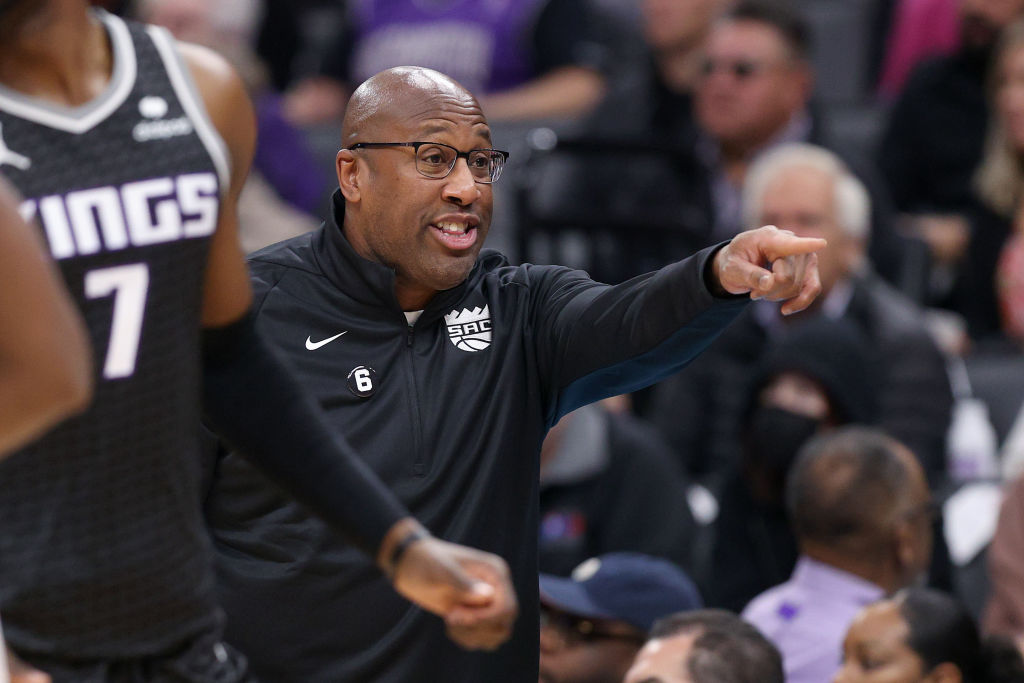Entering the ’93 Draft, Chris Webber was the head of one of the most talented, culturally controversial, and unapologetically “black” college basketball machines in NCAA history. He was also ripe off the infamous “phantom” timeout against UNC that cost Michigan the c’hip and damaged his college basketball legacy. But that inconceivable brain-freeze didn’t hinder Webber’s billing as a once-in-a-generation talent and consensus No. 1 pick.
He was touted as a Derrick Coleman, Magic, and Barkley hybrid – one of the great pure talents to ever wreck a hardwood.
In this same draft, we had another freak of nature. Anfernee Hardaway came out of nowhere, playing for Memphis before John Calipari and a slew of one-and-done studs turned the modest hoops program into a coveted basketball factory. Flossing a game that had more dimensions than a Kanye West album, Penny had draft-day hype surrounding him, as a potential lock to be Magic Johnson, with a touch of MJ.
The endless stream of superlatives these players enjoyed had NBA hoops-heads wigging out in anticipation of basketball’s revolutionary young-gunners.
Everything went according to plan at first. Orlando took Webber as No. 1 and Magic fans were salivating about the possibilities of him balling with Shaq. Within minutes, Webber was traded to the Golden State Warriors for Hardaway (3rd pick) and three future first-round picks. With the switch of caps, the fates and futures of both players became permanently linked and changed the course of NBA history.
When it was all said and done, neither player would reach their predicted immortal status. Their journeys often leave heads contemplating – like a ganja-induced epiphany – what might have been if that draft swap never went down.
In hindsight, a Shaq/Webber combo could have been greater than the Tim Duncan and David Robinson frontcourt that laid wreck to the league in ’99. They would’ve been a young, unguardable frontcourt with a solid supporting cast in Scott Skiles, Nick Anderson and deadly Dennis Scott, and could have given those feather-frontcourt Jordan squads some serious problems. Shaq would stack and attack. C. Webb would do everything from leading the break, to cleaning the glass, to dismantling the rack.
You know that’s what C. Webb, now a TNT analyst, wanted. But living with regrets is a part of life and Webber has had to live with the what-ifs his entire career.
“I think we would have been the game’s most devastating front line,” Webber said in a ’94 Sports Illustrated article.
Anyway you shape it, the winner of that trade was the player who got to throw alley-oops to “The Diesel.” But it still would have been a sight to see Penny, the multi-faceted and unselfish 6´7 magician, rocking out in Nelson’s innovative, unrestrictive offense and balling with Tim in an all-Hardaway backcourt.
On draft day it was understood that the Magic needed a power forward, and with the deftly-skilled Webber available, the union seemed like a no-brainer.
Why the trade?
Some say Shaq preferred Penny because he wasn’t trying to share touches or inches in the paint with another big man. Another theory is that Magic GM Pat Williams felt trading the top pick would give the Magic some much-needed salary cap relief (the following year, top pick Glenn Robinson received a mammoth contract that pushed the league to institute its current rookie wage scale), and stacking three future first-rounders was the way to build a strong squad.
It’s also been reported that Orlando was swayed by Penny’s pre-draft workouts which Williams described afterward by saying, “I’ve never seen someone come in and do the things that Penny Hardaway did in that workout, aiming passes and dunks that would have had crowds screaming in disbelief.”
Understood, but C. Webb was all that and a bundle of never-seen-before, baggy-short highlights at 6´10, 245 pounds. Remember when he posterized Sir Charles with a behind the back bash-down that immortalized him in a national commercial?
In retrospect, Williams’ wet dream set off a chain of events that diminished the projected iconic course of both players. It also created a backlash from Magic fans whose infatuation with a Webber/Shaq frontcourt initially soured them on Penny. “It’s been hard getting acceptance,” Hardaway said in that same SI piece, halfway into his rookie season. “There are still a lot of fans here who thought Chris was coming and are mad that he’s not here.”
Penny turned in one of the greatest “first five” years of his generation, quickly gained some O-Town love and then faded into the night like the aftermath of a Roman Candle.
Dude made first team All-NBA in his second season and then two more All-NBAs after that. Penny and Shaq were Magic and Kareem on steroids, winning the ECF in ’95 before losing to Hakeem Olajuwon’s Rockets in the Finals. Hardaway was able to drive Orlando to two more postseasons before injuries ravaged him. At the time, Michael Jordan himself said if he was going to “pass the torch” it would be to Penny.
His sneakers sold like condoms in a German brothel; he was a marketing monster; and the “Lil Penny” commercial was the blueprint for the popular LeBron and Kobe puppet commercials that Nike would use years later.
Meanwhile, winning NBA Rookie of The Year wasn’t enough to keep Webber in Golden State. Conflicts with head coach Don Nelson, who wanted Webber to play more traditional center, led to his exodus to Washington. At the time, cats thought maybe there’d be a pseudo-Fab Five renaissance with C.Webb joining Howard, but the success was minimal. Injuries limited him to just 15 games in the ’95-’96 season. But he did make his first All-Star squad in ’97, the same season he gave people a glimpse of what he could become, leading Washington to the playoffs for the first time in nine years, before getting swept by Jordan and the Bulls in a series that was closer than folks probably remember.
Once Webber got to Sac Town in ’99, he developed into a Top 8 NBA player, starring for some deep and dope Kings squads until ’03.
If Webber was a player of lesser gifts (like 95 percent of the big men that have ever bounced a ball), his career would be deemed super dope; but, like Penny, nagging injuries also kept Webber from reaching that Top 25 all-time status that seemed inevitable.
During his “prime” (1994 to 2004), he played 70 games or less in nine different seasons, missed 283 of a possible 870 games and kept an array of freak injuries, including the bum knee with Sacramento that was most responsible for impairing his potential greatness.
These guys came into the league anointed as future legends and were basically done a decade later with some memorable highlights and an arena full of unfulfilled promise.
Penny’s last All-Star was ’98. Webb’s first was ’97 and from ’00-’03 he played like the incomparable court-King he was destined to be. Wasn’t his fault Shaq and Kobe had his number. It’s an ironic twist of fate that the guy he should’ve been playing with was his ultimate roadblock; but it’s an example of how it only takes one draft day maneuver to throw a monkey wrench in somebody’s whole career.
At their peaks, Webb and Penny were icons, virtuosos. They were changing the game. Their draft-day swap 20 years ago is something hoops-heads obsess over, and it’s clear the move had ripples. It didn’t just impact two surefire Hall of Famers; it altered the NBA for a generation.



